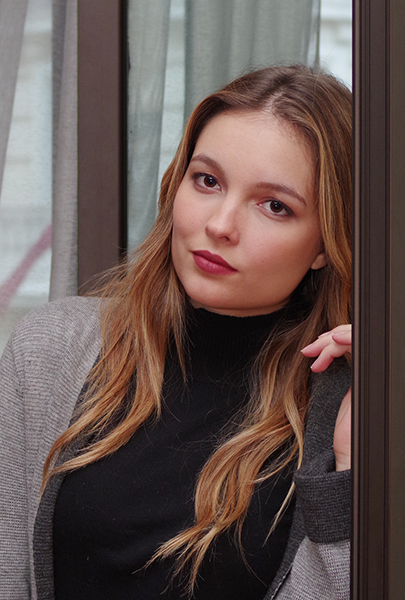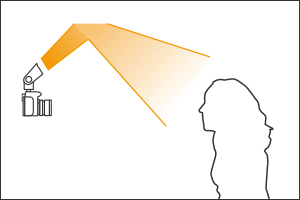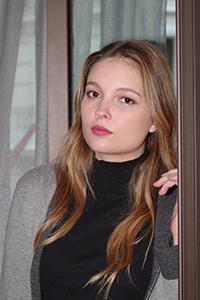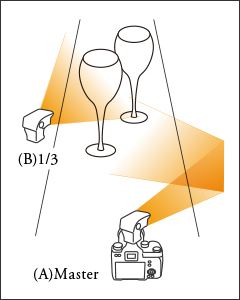Bounce flash
If you apply flash illumination directly on your subjects, it may cause unnatural, unwanted visual effects, such as dark shadows or flat textures. The most effective technique to soften the lighting is bounce flash, where you reflect the flash illumination off a ceiling or wall by changing the angle of a flash head to create a soft, indirect lighting effect. With PENTAX’s auto flash units, you can take advantage of advanced P-TTL Auto Flash operation to automatically set the proper exposure for your subject.


The flash illumination is bounced off the ceiling. The subject’s face is captured as a natural, three-dimensional image with subtle shadows.

The flash illumination is applied directly to the subject. The entire face is expressed as a flat, pale image.
Multi-flash lighting
By illuminating the subject from several different angles, this technique lets you create the desired visual effect, and produce an image with an intended sense of depth.
It offers a variety of possibilities: emphasizing the subject’s outlines using light cast from behind; creating faint shadows using diagonal lighting; or combining direct and indirect lighting for the desired visual effect.
Thanks to the highly accurate P-TTL Auto Flash system, the combination of a PENTAX digital SLR camera and a PENTAX auto flash unit simplifies such advanced flash applications as contrast-control sync and wireless sync.

Side lighting is used to dramatize carbonic acid bubbles and make them stand out.The illumination of the camera’s built-in flash (A) is bounced off the right-side wall to create a soft-lighted image of the glass. At the same time, another flash unit (B) is triggered wirelessly from the back of the subject.
Major features of auto flashes
Auto zoom
The flash unit automatically adjusts the angle of discharge in relation to the lens’s angle of view.*
This prevents disappointing results in wide-angle shooting when the image’s peripheral areas are underexposed due to insufficient lighting.
* The flash’s illumination range becomes shorter as the lens’s focal length shortens.
Synchronization mode
PENTAX auto flashes provide a choice of four synchronization modes, including the default setting of leading-curtain sync mode.
- Leading-curtain sync mode
The flash makes a discharge immediately after the leading shutter curtain opens. This mode provides the shortest time lag before the flash discharge.
- Trailing-curtain sync mode
The flash discharges a moment before the trailing shutter curtain closes. This mode is useful when you want to create a trace of the moving subject behind it.
- High-speed sync mode
The flash allows for the use of a shutter speed faster than the camera’s flash synchronization speed. This mode makes it possible to use a larger aperture for a natural bokeh effect in the background, even when you want to use flash illumination to erase subject shadows caused by backlight.
- Contrast-control sync mode
In multi-flash settings, this mode lets you adjust the balance of illumination between the camera’s built-in flash and external flash units, allowing you to control the shape, position and intensity of shadows.
Discharge mode
PENTAX auto flashes provide four discharge modes, including P-TTL Auto Flash featuring fully automatic discharge of proper illumination.








